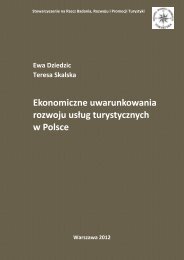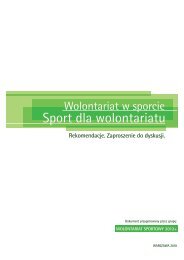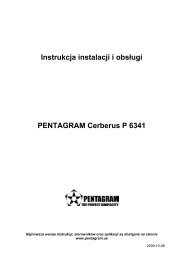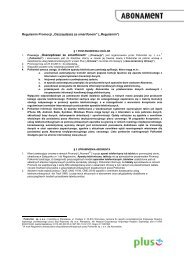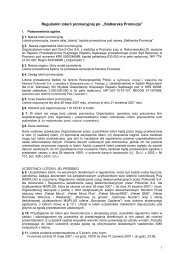Korytarz ekologiczny doliny Odry pdf
Korytarz ekologiczny doliny Odry pdf
Korytarz ekologiczny doliny Odry pdf
You also want an ePaper? Increase the reach of your titles
YUMPU automatically turns print PDFs into web optimized ePapers that Google loves.
Summary<br />
Œcinawa Depression (class I). The most important role as an ecological corridor is<br />
played in this part by deciduous forests, ox-bows, forests on the edges of the valley, in contrast<br />
to riverside meadows, which are especially rare here. There are no significant ecological<br />
barriers on the stretch of the valley.<br />
G³ogów Proglacial Stream Valley (class II). This part forms a very well-developed<br />
ecological corridor. The only more significant ecological barrier on this stretch is the area of<br />
the G³ogów Copper Smelter and the town of G³ogów.<br />
Kargów Basin (class III). In this tract only the forests on the edges of the valley create<br />
a good ecological corridor. There are no significant ecological barriers of anthropogenic<br />
character in this part.<br />
Middle Oder Valley (class II) . Except for riverside carrs, the ecological corridor in this<br />
area of the Middle Oder Valley is very well developed.<br />
Lubuski Water Gap (class III). This part of the valley, largely deforested and drained<br />
(except for the forested edges of the valley on the Polish side), is poorly developed. The<br />
most significant barrier is constituted by the urban complex of the town of S³ubice and<br />
Frankfurt.<br />
Freienwalde Basin (class II). The best developed elements of the ecological corridor of<br />
this part are meadows on the right side of the valley and the forests of its edges. The rest of<br />
components are of moderate and low value, especially on the German side, where a dense<br />
network of roads and settlements creates a very distinct ecological barrier.<br />
Lower Oder Valley (class I). Apart from the element of riverside carrs, the ecological<br />
corridor is very well developed. A distinct barrier is the traffic junction, south of Szczecin.<br />
Existing and future threats<br />
The major threats for the ecosystems of the Oder and its valley are:<br />
• large volumes of effluents of point, non-point and linear nature;<br />
• discharges of large amounts of saline mining waters;<br />
• illegal and legal, but insufficiently insulated, landfills;<br />
• dust and gaseous pollutants, transported with the air not only from the neighbouring<br />
industrial plants and cities, but also from distant areas of Poland, Germany and Czech<br />
Republic;<br />
• acid rains;<br />
• intensive agriculture, especially in the area outside the levees;<br />
• application of high levels of fertilizers and pesticides (irrelevant of the needs of the<br />
soil and the kind of crop);<br />
• use of extensive amounts of manure (especially raw) as a fertilizer;<br />
• draingae of extensive peatbogs and flood meadows in the Oder valley;<br />
• destruction of vegetation through the use of herbicides and the use in meadow management<br />
of highly efficient mixtures of grasses, peat extraction, etc.;<br />
215



![PENTAGRAM Cerberus [P 6367] Installation and Operation Manual](https://img.yumpu.com/49786948/1/184x260/pentagram-cerberus-p-6367-installation-and-operation-manual.jpg?quality=85)
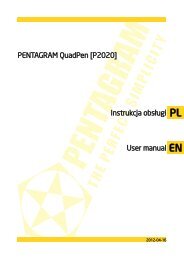
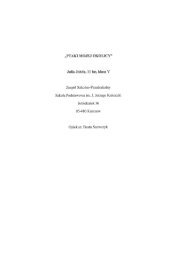

![PENTAGRAM Cerberus [P 6361] Quick Guide](https://img.yumpu.com/43449286/1/185x260/pentagram-cerberus-p-6361-quick-guide.jpg?quality=85)

